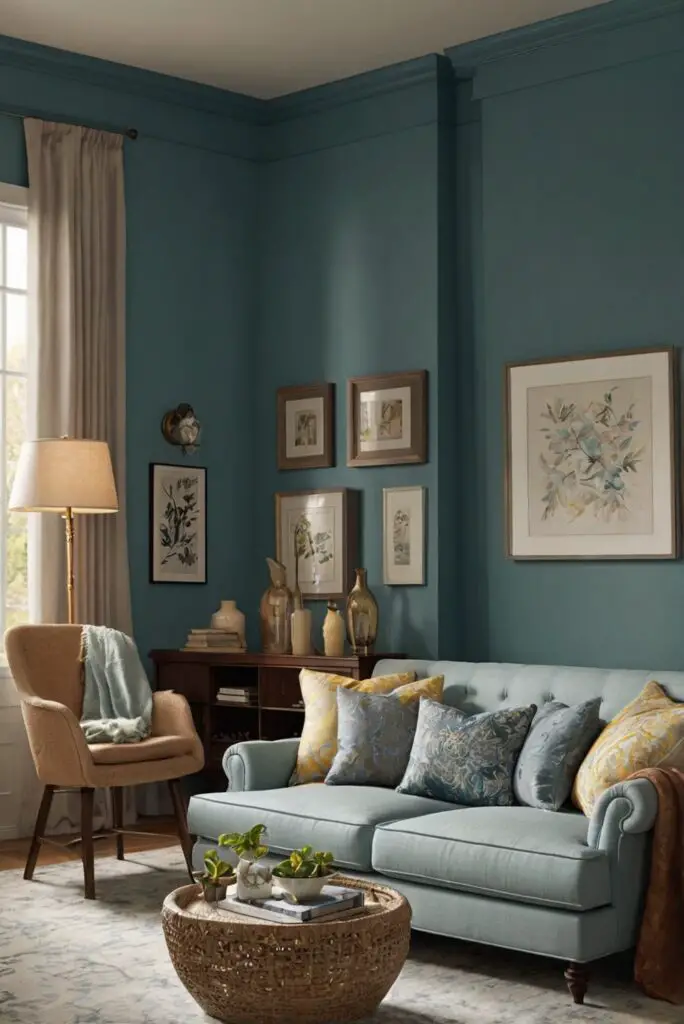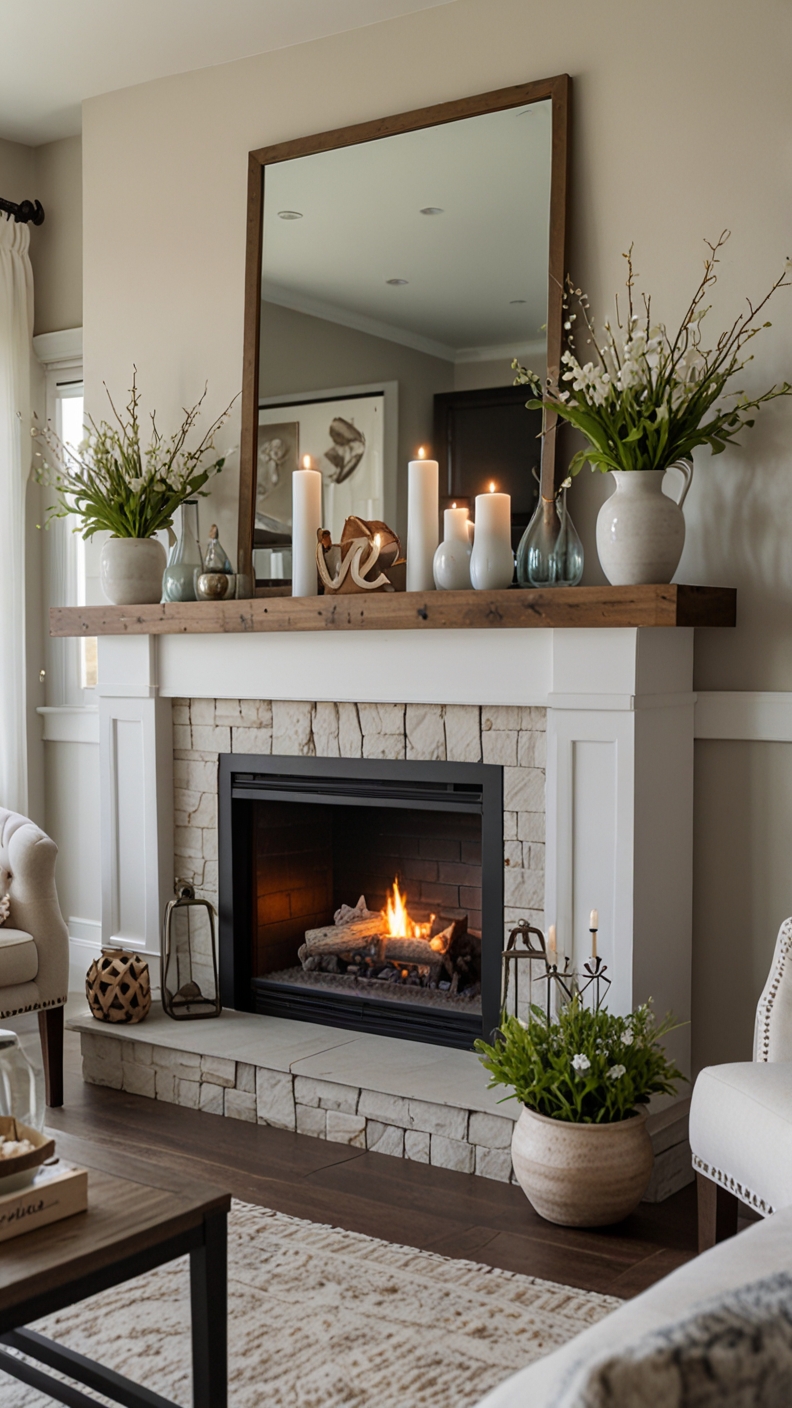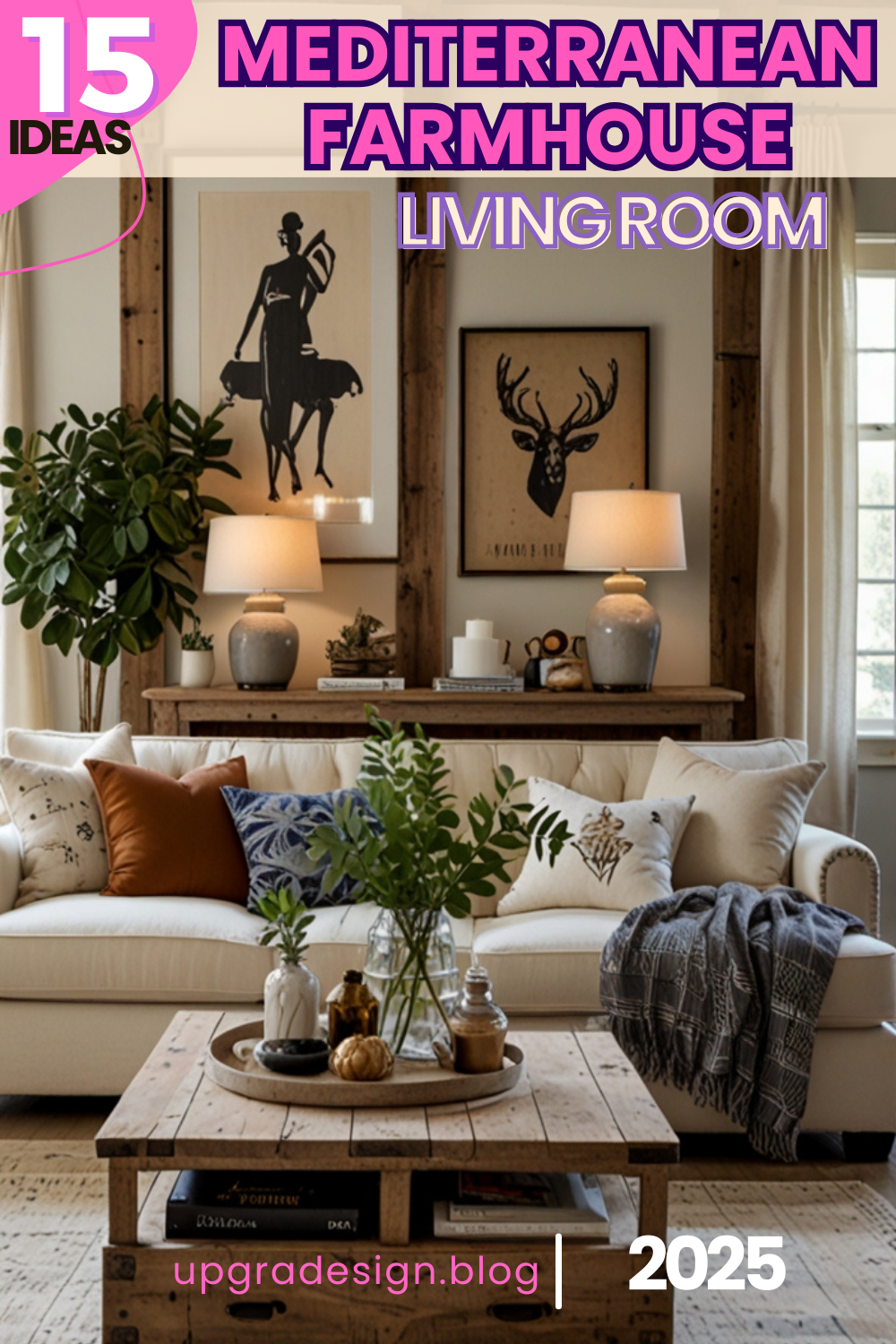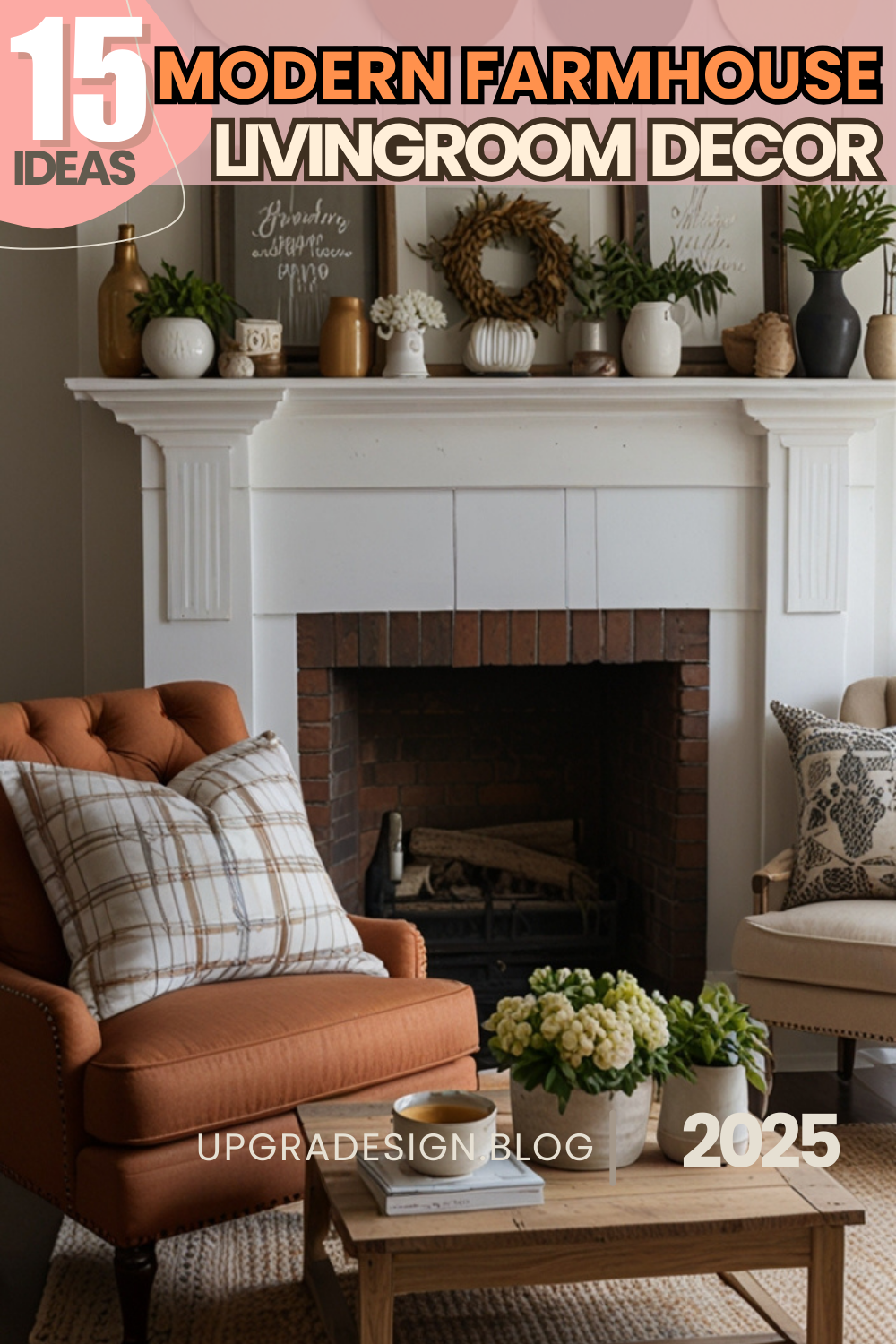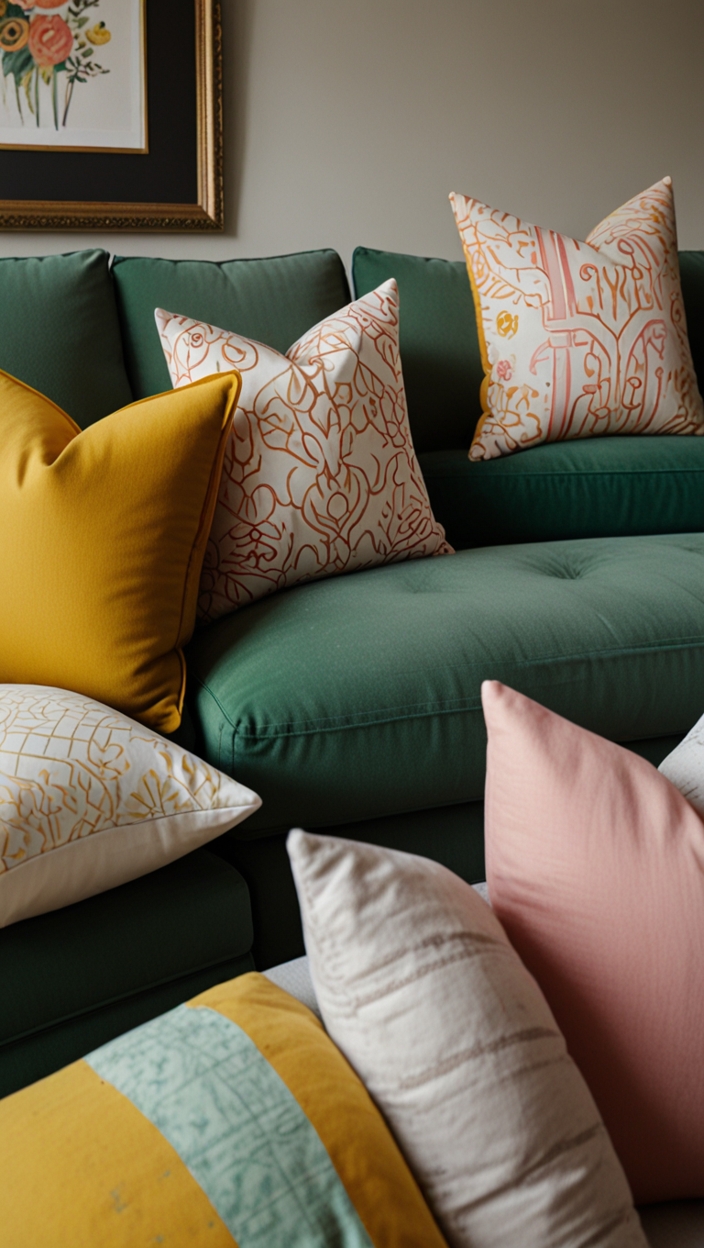Explore the power of a complementary color scheme with these daily interior designer tips to elevate your living room’s style and make a bold statement. Unlock the potential of your space!
To make a statement in your living room using a complementary color scheme, start by choosing two colors that are opposite each other on the color wheel. For example, a combination of blue and orange can create a bold and vibrant look. You can use the dominant color on the walls and the secondary color for accent pieces like pillows, rugs, or artwork. This color scheme can help create a cohesive and aesthetically pleasing space that showcases your personal style. Make sure to balance the colors throughout the room for a harmonious look. Don’t forget to consider the natural light in the room as it can affect how the colors appear.
When implementing a complementary color scheme, consider the following:
– Start by selecting a dominant color and a secondary color
– Use the 60-30-10 rule for distribution of colors (60% dominant color, 30% secondary color, 10% accent color)
– Experiment with different shades to create depth and dimension in the room
– Consider the mood you want to achieve with the colors chosen
My Lovely Spring Paint for 2025
Ready for a Spring Makeover? Explore the Freshest 2025 Paint Trends!
White Sage/Green SW Pistachio green Soft blue Honeysweet/Orange Pink Sugar Sage Tint BMAs an Amazon Associate, I may earn a commission from qualifying purchases at no extra cost to you.
By following these steps and incorporating a complementary color scheme into your living room, you can create a vibrant and stylish space that reflects your personality and design preferences.
How to pick the right complementary colors for my living room?
When selecting complementary colors for your living room, it’s important to consider the color wheel. Complementary colors are hues that are opposite each other on the color wheel, such as red and green, blue and orange, or yellow and purple. This creates a high-contrast, dynamic look that can make a bold statement in your living room. To pick the right complementary colors, you can start by choosing a dominant color for the room and then selecting its complement as the accent color. This will create a visually appealing contrast while ensuring harmony in the space.
What is the impact of using a complementary color scheme in my living room?
Using a complementary color scheme in your living room can have a significant impact on the overall look and feel of the space. The high contrast between the two colors creates a vibrant and energetic atmosphere, making the room visually appealing and engaging. Complementary colors can also help highlight key elements in the room, such as furniture pieces or accent walls, drawing attention to them and creating a focal point. This color scheme can add depth and dimension to your living room, making it feel more dynamic and exciting.
Can I combine multiple complementary colors in my living room decor?
My fAV Spring DECOR for 2025
Discover Spring’s Best 2025 Decor Combinations – Perfect for Any Room!
Oversized Indoor Plants White Curved Sofas Rugs BOH Brown Cream Moroccan Hype Boho Rug Outdoor Patio Furniture Sets Topfinel Pillow CoversAs an Amazon Associate, I may earn a commission from qualifying purchases at no extra cost to you.
While using multiple complementary colors in your living room decor can create a lively and colorful space, it’s important to do so with caution. Combining too many complementary colors can result in a chaotic and overwhelming look. To effectively incorporate multiple complementary colors, you can choose one dominant color and use its complement as an accent, while incorporating other complementary colors in smaller doses through accessories, artwork, or textiles. This will help create a cohesive and balanced color scheme that adds visual interest without being overpowering.
What are the benefits of using a complementary color scheme in my living room?
Using a complementary color scheme in your living room offers several benefits. It can create a vibrant and visually appealing environment that adds energy and personality to the space. Complementary colors also have the ability to make a statement and set the mood in the room, whether you want to create a bold and adventurous look or a harmonious and balanced feel. Additionally, the high contrast between complementary colors can help define different areas in the room and draw attention to specific design elements, enhancing the overall aesthetic appeal of your living room.
How to ensure a balanced look when using complementary colors in my living room?
Achieving a balanced look when using complementary colors in your living room is essential to prevent the space from feeling overly intense or overwhelming. One strategy to ensure balance is to use a neutral color as a backdrop or base for the room, allowing the complementary colors to stand out without competing with each other. You can also vary the intensity and saturation of the complementary colors to create harmony and avoid an overly loud look. Incorporating texture, patterns, and varying shades of the complementary colors can also help create a balanced and visually appealing space.
What are some common mistakes to avoid when implementing a complementary color scheme in a living room?
When implementing a complementary color scheme in your living room, it’s important to avoid common mistakes that can detract from the overall design. One mistake is using equal amounts of both complementary colors, which can create a jarring and unbalanced look. It’s crucial to establish a primary and secondary color within the scheme to maintain harmony. Another mistake is ignoring the impact of natural light on the colors, as different light sources can affect how the colors appear in the room. Additionally, overcrowding the space with too many colors or patterns can overwhelm the eye and diminish the impact of the complementary color scheme.
Why should I consider using a complementary color scheme to make a statement in my living room?
Using a complementary color scheme to make a statement in your living room can elevate the design and create a visually striking space. Complementary colors offer a bold and dramatic contrast that instantly grabs attention and adds personality to the room. By incorporating this color scheme, you can showcase your unique style and create a memorable impression on guests. Whether you opt for a subtle and sophisticated look or a vibrant and eclectic vibe, a complementary color scheme can help you make a statement and express your creativity through the design of your living room.
Key Takeaways:
– Complementary colors: Opposite colors on the color wheel that create a dynamic contrast.
– Selection: Choose a dominant color and its complement for a balanced look.
– Impact: Complementary color schemes enhance visual appeal and add energy to the room.
– Balance: Use neutrals as a base and vary the intensity of colors for harmony.
– Mistakes to avoid: Equal usage of colors, ignoring natural light, and overcrowding with colors.
– Statement-making: Complementary colors can help you create a bold and memorable design statement in your living room.

